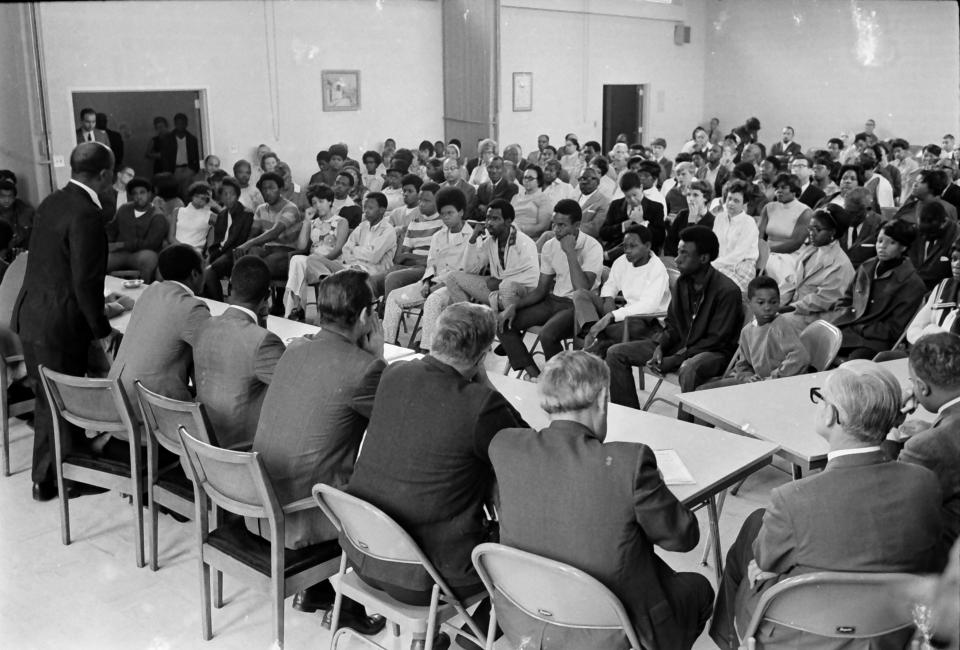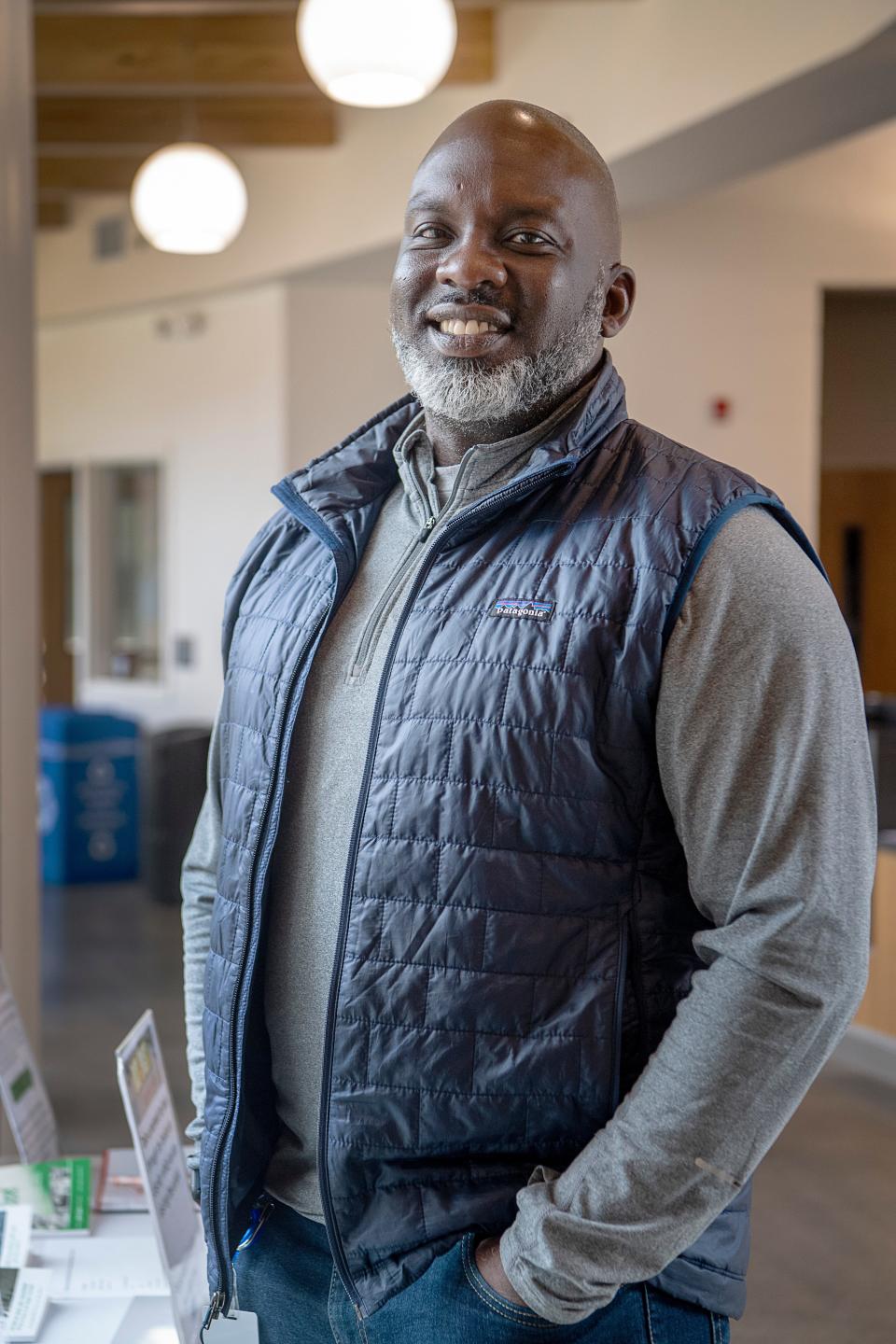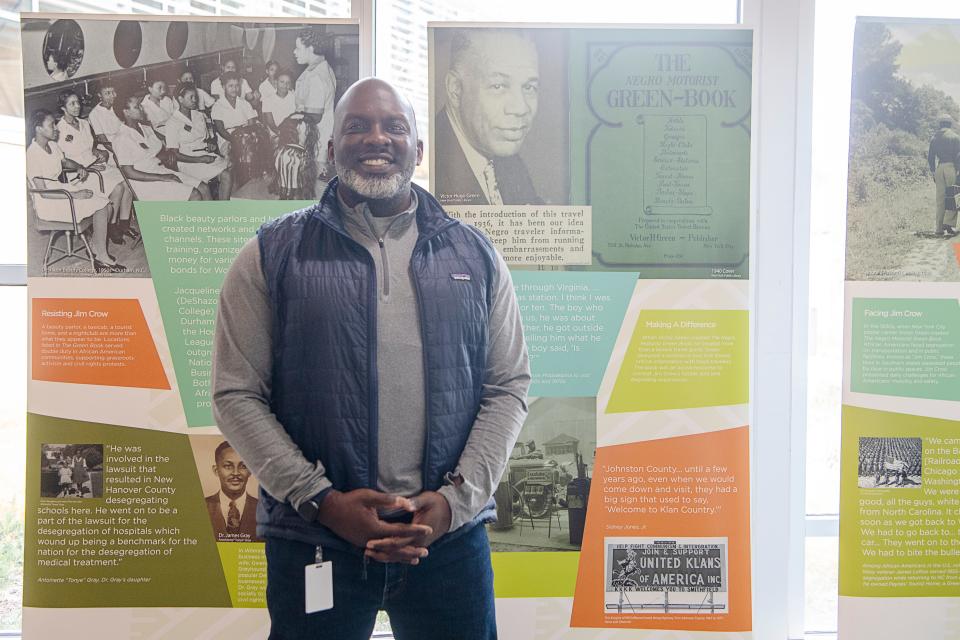'Green Book' exhibit features Asheville places safe for 20th century Black travelers
ASHEVILLE - In the early 1920s, a home at 360 College St. was bought by a women-led community organization known as the Employment Club. The group would go on to create the Phyllis Wheatley branch of the YWCA — one of the most prominent Black-led organizations in Western North Carolina until the integration of the YWCA in the mid-1960s.
The YWCA was one of the 13 locations in Asheville featured in the "The Negro Motorist Green Book," published from 1936 to 1966, and is prominently highlighted in a touring exhibit visiting Asheville called "Navigating Jim Crow: The Green Book and Oasis Spaces in North Carolina."
The exhibit was designed and researched by the North Carolina African American Heritage Commission to highlight the "Green Book," which was used as "both a travel guide and a tool of resistance to confront the realities of racial discrimination in the United States and beyond," according to a city of Asheville news statement.

"It was one of my favorite places because they used to have the teen dances and they had a teen coordinator there at the YWCA who was very good," said Viola Spells, an Asheville artist who spoke with North Carolina African American Heritage Commission about the YWCA for the project's oral history segment.
The exhibit highlights the different locations across North Carolina that acted as safe havens for Black travelers and residents during Jim Crow and provides an online oral history of the "Green Book." The exhibit's stop in Asheville was organized by city staff at Asheville Parks and Recreation and has visited three community centers over the month of November.
From hotels and restaurants to barber shops and beauty salons, the "Green Book" provided a clear and distinct guide to locations that were safe for Black people traveling in the South during the times of legal segregation.
In Buncombe County, the 13 listed locations were varied and distinct. The book charted hotel businesses for tourists — like the YWCA or the Savoy Hotel — to barber shops such as Do Drop In or Wilson's on Eagle Street.
Director of Asheville Parks and Recreation D. Tyrell McGirt said having the exhibit in community community centers made the most sense to promote discussion as community members flow through the area.

"We're natural places where people come and build communities. Folks are here for basketball, or they're here for a community meeting in one of our multipurpose rooms. This is an ideal spot, I think, for the exhibit like this. Because it just creates conversation around what's happened," McGirt said.
Many of the businesses listed in the Green Book no longer exist, or were irreparably changed by urban renewal.
In the 1960s and '70s, the city of Asheville tore down hundreds of homes it deemed uninhabitable in mostly Black neighborhoods, removing parts of streets like Southside Avenue, while also leading to the subsequent pollution of local streams like the Nasty Branch stream that runs through the Southside community.
Black Asheville honor: Historical moment for Allen School: Highway marker is unveiled
More: Southside United honors legacy of Walton St. Park; looks forward to neighborhood's future
The difficulties of the area are emphasized by the recently discussed South Slope plan, which discussed the effects of urban renewal on the area, and, notably, its businesses.
"Urban renewal and the East Riverside project removed a large number of commercial and residential buildings, eliminated some streets, and redeveloped other streets," the plan says. "Visitors to the area today often have no idea about the history of the area and what occurred in the community prior to the recent influx of new businesses and many breweries since about 2010 to the present."
Examples of the businesses damaged by urban renewal are evident in the "Green Book." The James-Keys Hotel, opened in 1944 at 409 Southside Ave., was listed in the "Green Book" until publication stopped in 1966.
Then, six years later, the hotel was demolished as part of the East Riverside Urban Renewal project, according to the North Carolina African American Heritage Commission.
As for the 360 College St. YWCA, it was torn down to make way for a road expansion in the mid '60s, according to the NCAAHC. The Phyllis Wheatley branch shortly operated off of Asheland Avenue prior to moving to the current South French Broad location. The YWCA was desegregated in 1968.
McGirt hopes providing a space for the exhibit adds to the discussion and offers a way to move forward.

"Yes, it's important that we continue to have the discussion and the significance of its impact on us to date. But I also think it's important that we can't change what's happened. How can we move forward understanding the impact that the past has had? What are those things we can do better at?" McGirt said.
"And having an opportunity to look back gives the city a chance to get it right moving forward."
Learn more
The exhibit can be viewed at its last stop at the Linwood Crump Shiloh Community Centeer at 121 Shiloh Road in South Asheville from Nov. 20-22. The building's hours are from 9:30 a.m.-8 p.m.
To learn more about the project, visit https://aahc.nc.gov/green-book-project.
More: What has been achieved with Asheville reparations? Summit encourages participation
More: As new ACS liaison on A-B Tech board Asheville's Roger Reid to advocate for Black youths
Will Hofmann is the Growth and Development Reporter for the Asheville Citizen Times, part of the USA Today Network. Got a tip? Email him at WHofmann@citizentimes.com.
This article originally appeared on Asheville Citizen Times: Asheville Black life under Jim Crow featured in 'Green Book' exhibit

